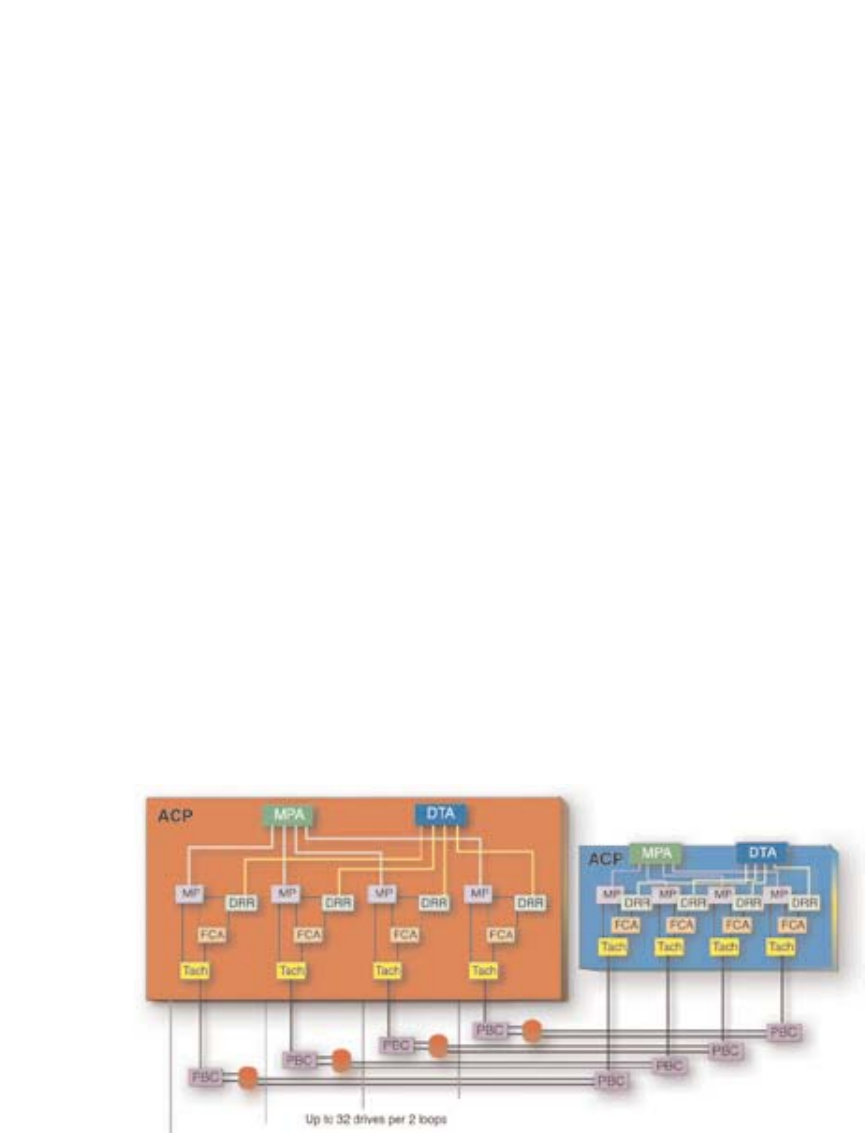
21
High Performance Back-end
Design
High-speed Back-end Design
New Hitachi high-performance back-end drives are available with the Lightning 9900
™
Series. The drives are attached via Fibre Channel – Arbitrated Loops (FC-AL). Eight
100MB/sec FC-AL connect to dual ported drives for each ACP pair. With four configured
ACP pairs installed (at 800 MB/sec per ACP pair) that’s 3.2GB/sec total back-end
bandwidth to the physical drives.
Each FC-AL path is driven with a dedicated processor and a Data Recovery and
Regeneration (DRR) circuit. This is in contrast to the Hitachi Freedom 7700E
™
, where two
of the FW-SCSI-2 paths in the back end were shared through a single processor and single
DRR circuit. (See also Figure 2). Basically, the number of processors and DRR circuits in
the back end of the Lightning 9900 Series has increased to 32 (for the Lightning 9960
™
),
compared to the 7700E’s 16. The diagram of a Lightning 9900
™
Series ACP pair is shown
in Figure 17 and Figure 18. Figure 19 illustrates all four ACP pairs with 32 back-end disks
per array group.
The Lightning 9900
™
Series uses advanced algorithms for managing performance of
ACP pairs.
New Fibre Channel Disk Drives
The back-end performance of the Lightning 9900
™
Series is enhanced with the
introduction of a new dual ported/dual active Fibre Channel disk drive technology. These
disk drives are specially designed and built by Hitachi Ltd. for the Lightning 9900
™
Series.
The disks are in a 3-inch form factor with capacities available in 18GB and 73GB spinning
at 10,025RPM. These are all high-density disks (HDDs) spinning at high RPMs. The
transfer rates with these new disks are approaching 60MB/sec. Higher sectors per physical
track means less head movement and more data transferred per rotation, even when
compared to the 7700E 15GB disks, which spin at 12,030RPM.
5
Figure 17 – Functional
diagram of a Lightning
9900
™
Series ACP pair.
The Lightning 9900
™
Series uses custom
Hitachi high availability
disk drives.


















